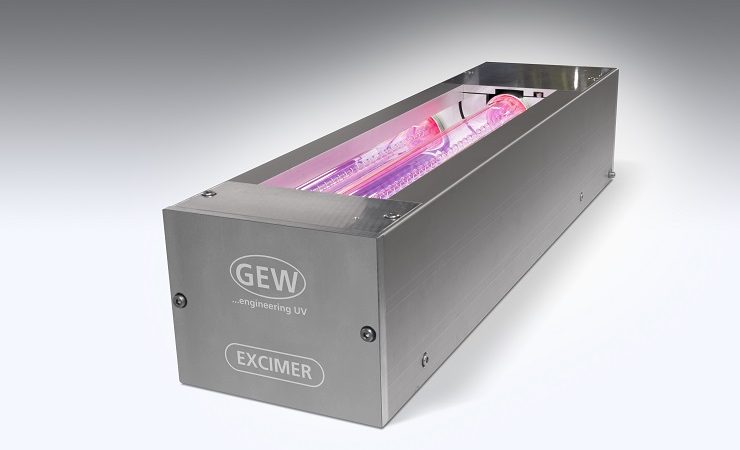GEW has developed EXC, an excimer UV lamp system commonly used for mattification of surface coatings.
EXC utilises dielectric barrier discharge (DBD) lamps to produce quasi-monochromatic vacuum ultraviolet radiation, typically at 172nm. This radiation is commonly used for mattification of surface coatings where the elimination of matting agents can significantly improve stain resistance and durability of the final product. Gloss levels down to 2 GU can be achieved and the high efficiency lamps only require 5W/cm input power. Instant on/off switching enables customers to switch between high gloss (80 GU or higher) and matte finish products in seconds. Other applications include modification of surface tension for improved adhesion, or surface cleaning for semiconductor and medical industries.
Robert Rae, managing director, sales at GEW, aid, ‘GEW excimer lamps can be produced in widths from 12cm up to 230cm and at up to 30mW/sqcm peak irradiance, the GEW system is one of the most powerful systems available worldwide. 222nm and 308nm variants are available and lamps can be custom integrated to the customer’s specific application, including provision for all required nitrogen inerting and control.
‘They can also be seamlessly integrated into the wider GEW UV systems, which may be required for pre-gelling and post-cure, so that GEW can provide a turnkey curing or cleaning solution for any process.’
Mr Rae continued, ‘Excimer technology for mattification eliminates the need for coatings to have additive mattifying agents. These agents, often mixed on site, can introduce significant variability and time to the coating process, which is completely eliminated with excimer. In addition, the finished product is susceptible to ‘polishing’ during further processing and often has poor physical and chemical durability.
‘Excimer coatings, with their 100% solid content, increase hardness, stain resistance and give preferable haptics. Further, pre-gelling the coatings with a UV LED lamp prior to excimer exposure allows for some control over the granularity and gloss level of the result, which gives additional process consistency and flexibility.’



I want to know the price of the GEW launches excimer UV mattifying system.